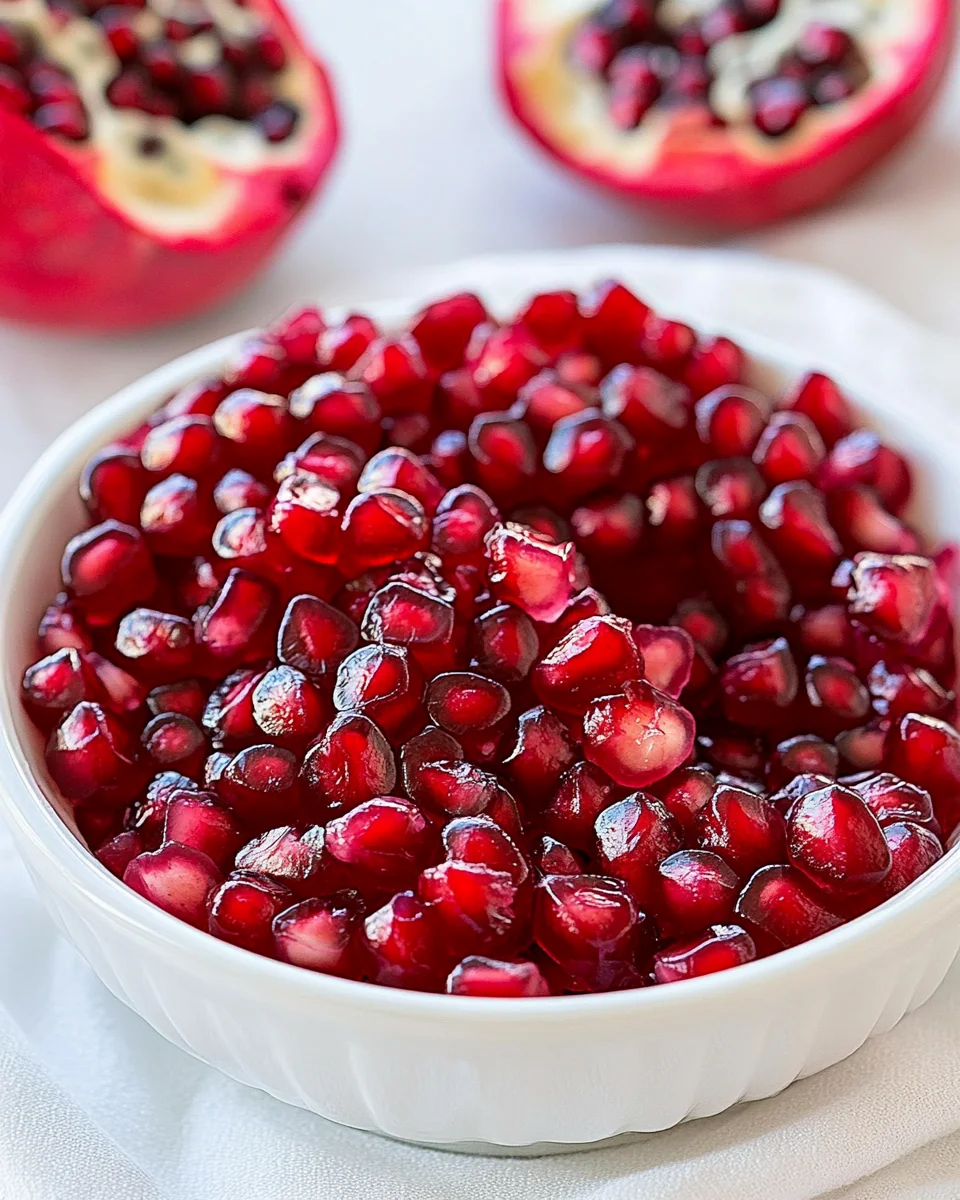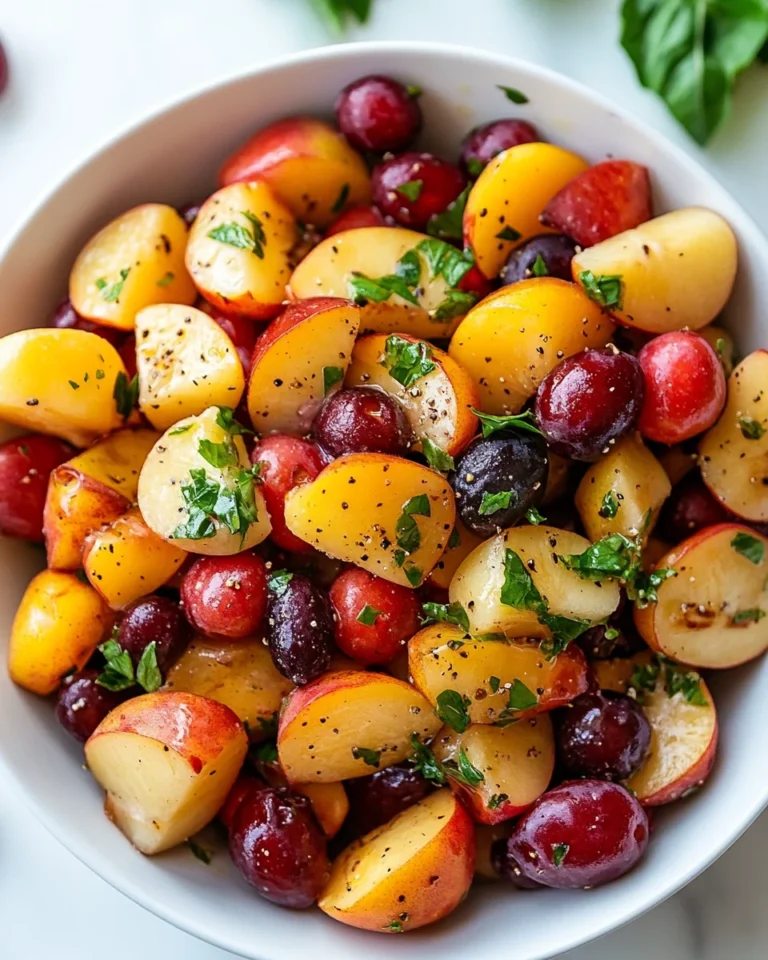Simple Ways To Cut A Pomegranate
The Simple Ways To Cut A Pomegranate can elevate your culinary experience by introducing a burst of flavor and vibrant color to your dishes. Known for their sweet and tangy taste, pomegranates are a treasure trove of juicy seeds that can enhance salads, desserts, and even savory meals. Whether you’re preparing a family dinner or looking for a unique addition to your weeknight meals, mastering the art of cutting a pomegranate is essential. This guide will help you explore the best methods to cut this beautiful fruit, ensuring that you can enjoy its delicious seeds without the hassle of mess or waste.
Why You’ll Love This Recipe?
There are several compelling reasons to explore the Simple Ways To Cut A Pomegranate. First, the flavor profile of pomegranates is unique; their sweet and tart balance makes them a versatile ingredient suitable for a variety of dishes. Whether you are adding them to a salad for a refreshing crunch or using them as a garnish on your favorite main course, their vibrant red seeds are sure to impress. Second, learning the Simple Ways To Cut A Pomegranate is incredibly easy and quick. You don’t need any specialized tools; just a sharp knife and a bowl to catch the seeds will suffice. This simplicity means that even novice cooks can confidently tackle this fruit. Third, the visual appeal of pomegranates cannot be overstated. The glistening seeds, also known as arils, can transform an ordinary dish into a stunning centerpiece, making them perfect for festive occasions or special meals. Lastly, pomegranates are packed with nutrients, antioxidants, and vitamins, making them not only a delicious choice but a healthy one as well.
Ingredients :
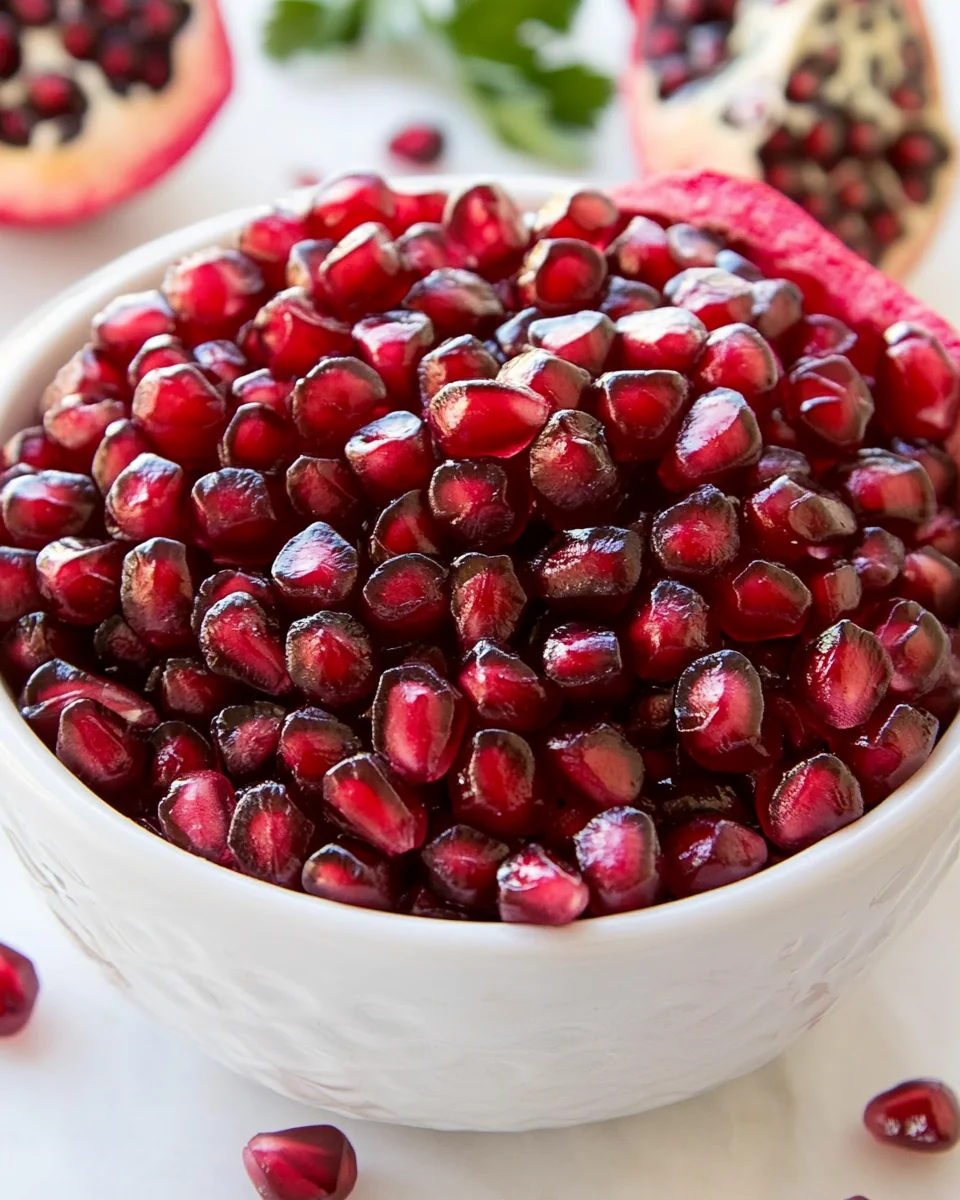
To successfully cut a pomegranate, you will need the following ingredients and tools:
- Pomegranate: Choose a ripe pomegranate that feels heavy for its size, indicating that it is full of juice. Look for a vibrant red color and a firm skin without any blemishes. One medium-sized pomegranate typically yields about 1 cup of arils, which can be used in various recipes or enjoyed fresh.
- Sharp Knife: A high-quality, sharp knife is essential for making clean cuts through the tough skin of the pomegranate. A serrated knife can also work well, as it helps to grip the skin without squashing the seeds. Ensure the knife is clean and dry for optimal results.
- Cutting Board: A sturdy cutting board provides a safe and stable surface for cutting. If you have a plastic board, it’s easier to clean afterward, especially since pomegranate juice can stain. Choose a board that gives you enough space to work comfortably.
- Bowl: Use a bowl to catch the arils as you cut the fruit. A deep bowl is preferable to minimize splashes from the juice. This will help you collect all the seeds without making a mess on your countertop.
Step by Step :
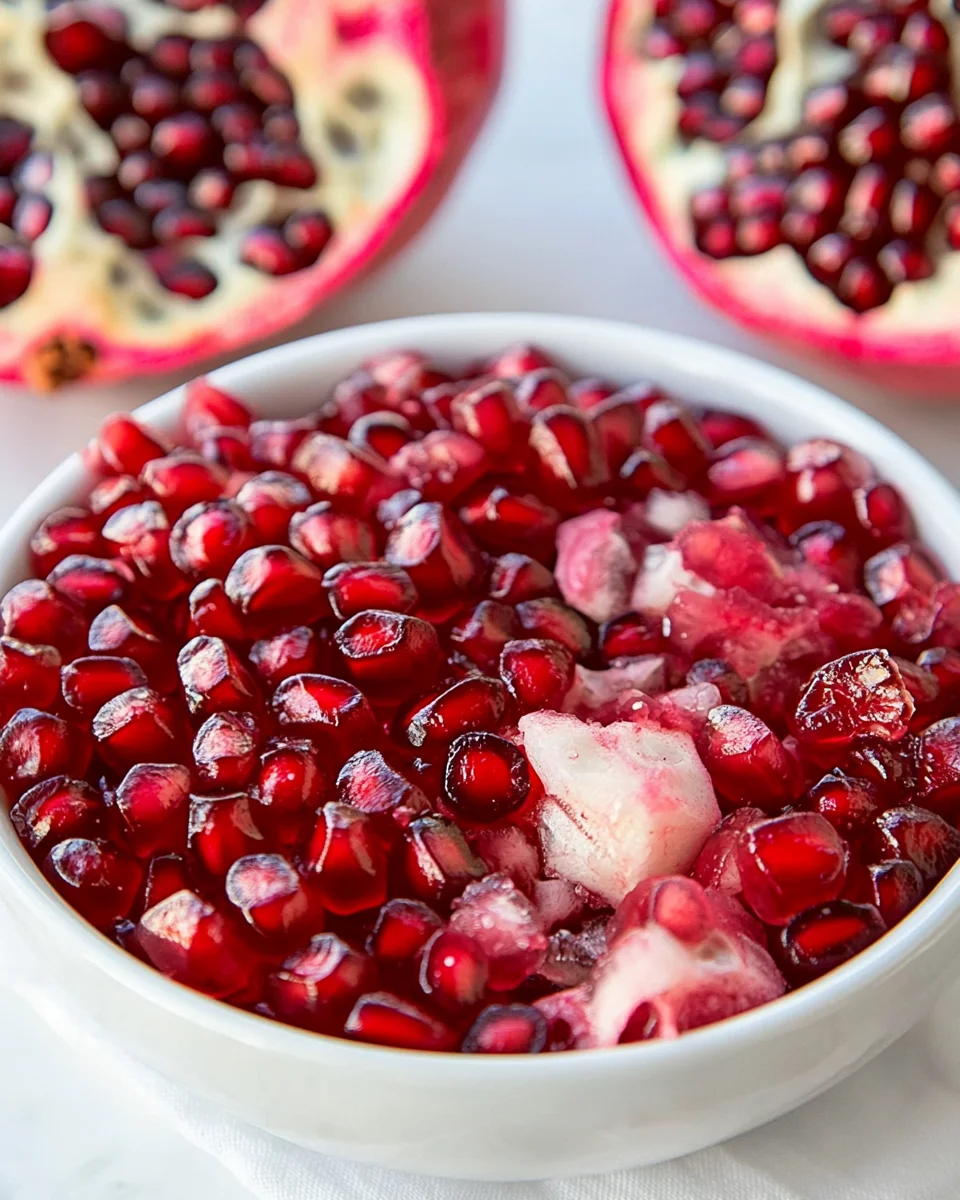
Follow these detailed steps to master the Simple Ways To Cut A Pomegranate effectively:
- Start by selecting a ripe pomegranate. Look for a fruit that has vibrant skin and feels heavy for its size, indicating it’s full of juicy seeds. Rinse it under cool water to remove any dirt or residue.
- Place the pomegranate on a stable cutting board. Using your sharp knife, carefully slice off the crown (the top) of the pomegranate, about half an inch from the top. This will expose the interior of the fruit.
- Next, score the skin. Make shallow cuts from the top to the bottom, following the natural ridges of the pomegranate. Aim for about four to six sections, depending on the size of your fruit. Be careful not to cut too deeply, as you want to avoid slicing through the seeds.
- After scoring, gently pull apart the sections of the pomegranate. Use your hands to open it up, revealing the beautiful clusters of arils inside. The fruit should come apart easily if you’ve cut deep enough.
- Now it’s time to remove the arils. Hold each half over a bowl, cut side down. Gently tap the back of the fruit with a wooden spoon to dislodge the seeds into the bowl. This method minimizes juice splatter and ensures you get most of the arils.
- If some arils remain stuck, you can use your fingers to gently pry them out. Be mindful of the juice, as it can stain surfaces. Collect all the arils in your bowl, discarding any pith or membrane that may fall into the bowl.
- Once you’ve extracted all the seeds, you can rinse them gently under cold water to remove any remaining pith. This step helps to enhance the flavor of the arils when you consume them.
- Now, enjoy your freshly cut pomegranate seeds! You can add them to salads, yogurt, or use them as a garnish for various dishes.
Tips for Variations:
Exploring Simple Ways To Cut A Pomegranate opens up opportunities for creative variations. Here are some ideas to enhance your experience:
- Whole Pomegranate Method: Instead of cutting the pomegranate open, consider rolling it firmly on the counter to loosen the seeds inside. Then, cut a small hole at the crown and squeeze the fruit, allowing the seeds to fall into a bowl. This method can yield less mess and is quicker for those who want immediate results.
- Water Method: Fill a bowl with water and cut the pomegranate underwater. This technique prevents juice from splattering everywhere. The seeds will sink to the bottom while the pith floats, making it easier to separate them.
- Using a Citrus Juicer: Some people find it easier to use a citrus juicer to extract the juice and seeds simultaneously. Cut the pomegranate in half and press it into the juicer, collecting the juice and seeds in one go. Just be cautious, as this can be juicier than your typical cut!
- Incorporate into Dishes: Once you’ve mastered cutting a pomegranate, consider incorporating the arils into various dishes. They add a pop of color and flavor to salads, smoothies, and even grain bowls. Their versatility allows you to use them in both sweet and savory recipes.
- Decorative Presentation: Use your freshly cut pomegranate as a garnish for festive occasions. Arrange the arils in a decorative bowl or scatter them over desserts for an eye-catching presentation. Their jewel-like appearance is sure to impress your guests.
Serving Suggestions:
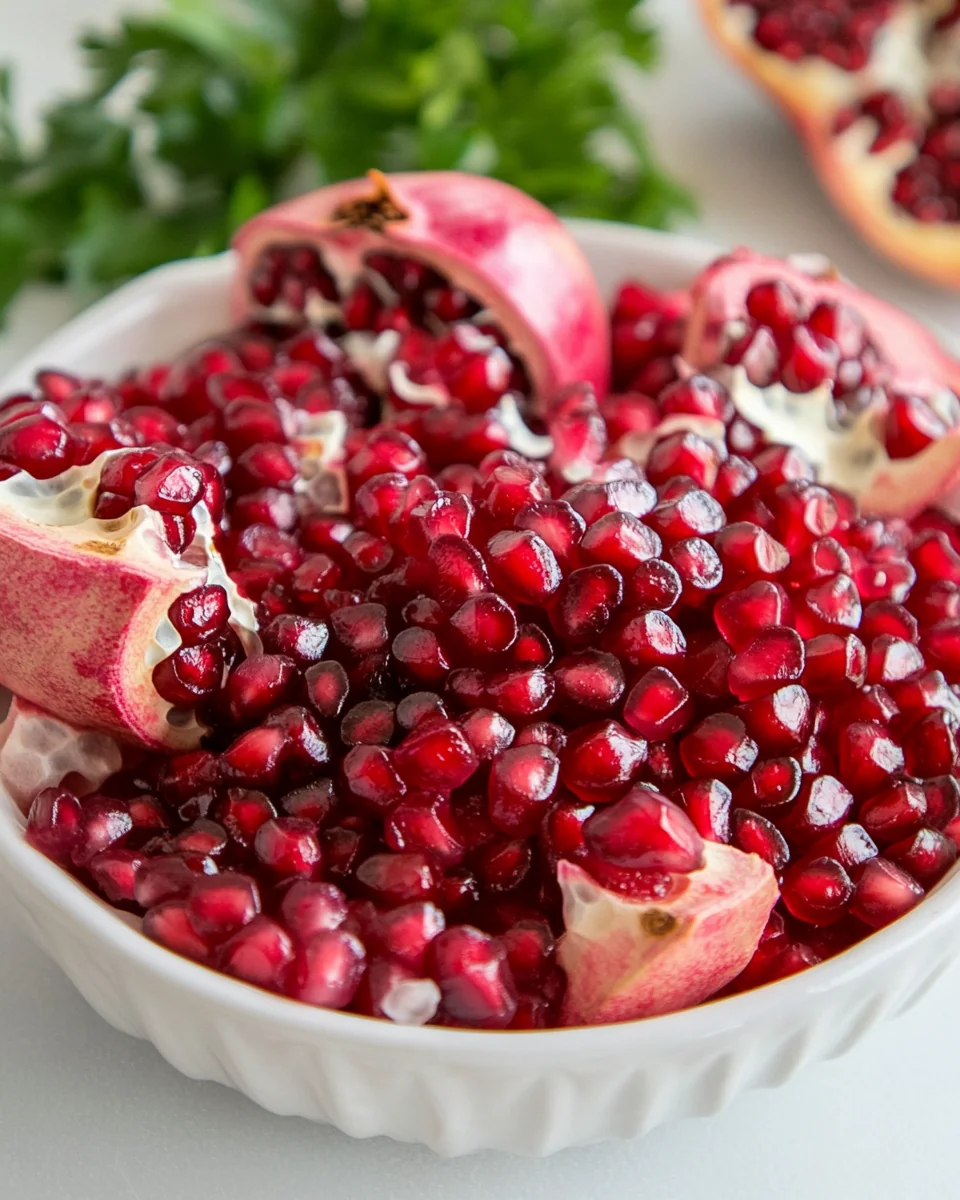
When it comes to serving dishes that include pomegranates, the possibilities are endless. Here are some detailed ideas for incorporating your freshly cut pomegranate seeds:
- Salads: Add pomegranate arils to mixed greens, along with feta cheese, walnuts, and a light vinaigrette. The sweetness of the pomegranate beautifully complements the tanginess of the cheese and the crunch of the nuts.
- Breakfast Bowls: Top your morning yogurt or oatmeal with pomegranate seeds for a nutritious boost. Pair it with nuts and honey for a delicious breakfast that is both filling and visually appealing.
- During Ramadan: Pomegranates are a traditional fruit enjoyed during Ramadan. Serve them as part of your iftar meal, perhaps by adding them to a refreshing fruit salad alongside dates and other seasonal fruits.
- Seasonal Pairing: Pomegranates are perfect for fall and winter dishes. Incorporate them into roasted root vegetables or grain salads to add a touch of color and sweetness that balances the earthiness of these ingredients.
- Storage Tips: If you have leftover pomegranate seeds, store them in an airtight container in the refrigerator. They can stay fresh for up to a week, allowing you to enjoy their flavor in various dishes throughout the week.
FAQ:
How do I store leftovers?
To store leftover pomegranate seeds, place them in an airtight container and keep them in the refrigerator. They can last up to one week, allowing you to incorporate them into meals or snacks throughout the week.
Can I freeze this recipe?
Yes, you can freeze pomegranate seeds for later use. Spread the seeds on a baking sheet in a single layer and freeze them until solid. Once frozen, transfer the seeds to a freezer-safe bag or container. They can be stored for up to six months.
What is the best time to cut a pomegranate?
The best time to cut a pomegranate is when it is ripe, which is typically in the fall and winter months. Look for pomegranates that feel heavy for their size and have vibrant red skin to ensure they are juicy and sweet.
Can I eat the skin of a pomegranate?
No, the skin of a pomegranate is not edible. While the skin is not harmful, it is tough and bitter. Focus on enjoying the juicy arils inside, which are the edible part of the fruit.
Are pomegranates good for health?
Yes, pomegranates are considered very healthy. They are rich in antioxidants, vitamins, and minerals, contributing to heart health, reducing inflammation, and providing numerous health benefits. Enjoying pomegranate arils can be a delicious way to enhance your nutrition.
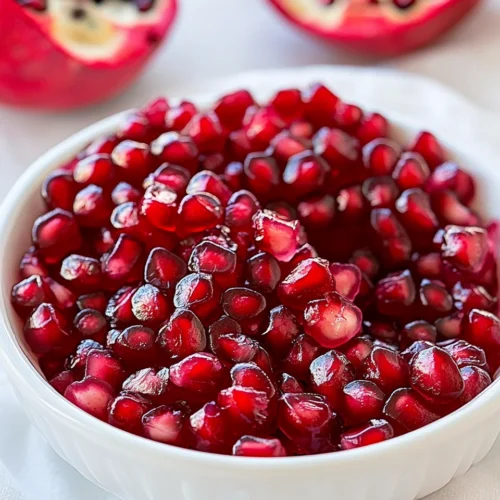
Simple Ways To Cut A Pomegranate
Equipment
- Sharp Knife
- Cutting Board
- Bowl
Ingredients
- 1 medium Pomegranate Choose a ripe pomegranate that feels heavy for its size.
- 1 Sharp Knife A high-quality, sharp knife is essential for making clean cuts.
- 1 Cutting Board A sturdy cutting board provides a safe and stable surface.
- 1 Bowl Use a bowl to catch the arils as you cut the fruit.
Instructions
- Start by selecting a ripe pomegranate. Rinse it under cool water to remove any dirt or residue.
- Place the pomegranate on a stable cutting board. Using your sharp knife, carefully slice off the crown (the top) of the pomegranate, about half an inch from the top.
- Score the skin with shallow cuts from the top to the bottom, following the natural ridges of the pomegranate.
- Gently pull apart the sections of the pomegranate to reveal the arils inside.
- Hold each half over a bowl, cut side down, and gently tap the back with a wooden spoon to dislodge the seeds.
- If some arils remain stuck, use your fingers to gently pry them out.
- Rinse the arils gently under cold water to remove any remaining pith.
- Enjoy your freshly cut pomegranate seeds in salads, yogurt, or as a garnish.

